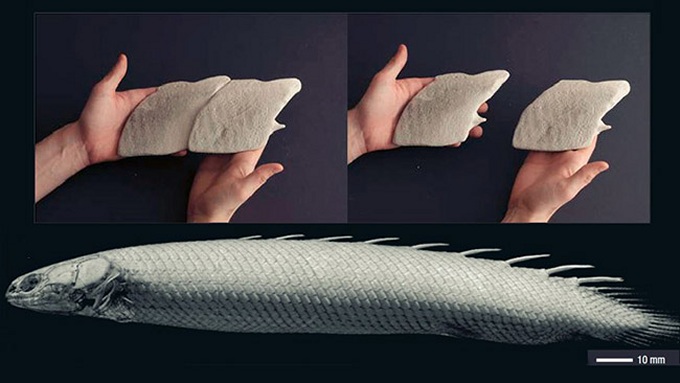It may sound fishy but researchers from MIT looked to the ancient fish “Polypterussenegalus” for inspiration in modern warfare. This fish has a sturdy exoskeleton and each of the scales that cover its long body is made up of multiple layers, which are a combination of several materials lined up in a certain way. When this fish is bitten, each layer cracks in a different pattern so that the scale stays intact as a whole.
Now a team of engineers are analyzing the aquatic armor, figuring out how it works. After performing x-ray scans of scales, they are using 3D printing and 3D modeling to develop body armor that would protect humans in a similar way.
The researchers created 3D computer models of the different scale types. As the scales were very small, they blew them up to 10 times their original size.
They hope to develop the body armor for the US military. It’s rigid and strong across the torso and more flexible towards the joints. Not only that, they hope to expand this technology to other realms of human protection as well, for instance, scaly armor made from heat-resistant materials for firefighters or neck guards for football players.







